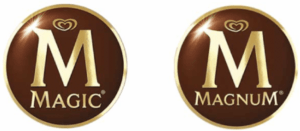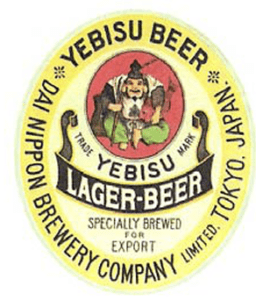Introduction
If one day I suddenly ask you what would be the first thing that comes to your mind that you think is the most important, crucial, necessary, a must-have tool for anyone who is trying to get into the artistic world and trying to do art-related projects such as designing logos? Some of you guys would maybe immediately think of drawing skills or painting skills or even technical skills such as knowing how to use Adobe programs like Illustrator and Photoshop like the back of your hand. Even though all these answers are indeed correct and I do agree as well that having these types of skills are important in the artistic world, but I think there is another thing that all of these skills stem from… Creativity.
I have always felt that whenever someone asks me what is the one and most important skill to have when doing arts, the word “creativity” immediately pops into my mind. This does not come as a big surprise to me as artists literally uses this word on a day to day basis with their colleagues and friends like “I think we can make this logo more creative or unique… No, this isn’t creative enough… Let’s put maximum creativity into this logo!” Though the word “creativity” has always been one of the most commonly used words in the art world, it has always been a question for me as to what exactly do people mean when they say to “have creativity” or to “be creative”.
To me, perhaps the reason why I’ve never been able to fully understand what people meant by being creative or having creativity was because the word itself was extremely vague and that it could be applied to all the little things that we do in our lives.
Inspired by this train of curiosity, I decided to research a bit more about creativity such as what exactly is creativity? How do you improve it? Is there a way to measure or dictate whether you have enough creativity to be a designer or artist?
Creativity…

So I first started off by looking up the most basic question on the internet to start my search about creativity itself… “What exactly is creativity?”. At first, I immediately got a search result from Oxford languages about the definition of creativity and it was defined by the website as “the use of imagination or original ideas to create something” Even though this definition may be correct, but I felt that this definition was not really encapsulated, or something was missing as it did not encompass how creativity can be also utilized. Hence, I kept on searching. After a while, I came across an article about creativity as well that was written by the American Psychological Association. The article immediately starts off by stating that “Not all creative people are alike, which makes defining creativity a challenge and assessing it a monumental undertaking.” I would like to ask you all which definition or statement do you agree with more about creativity? Even though the latter did not exactly provide a concrete definition of what creativity was, I prefer this one as it acknowledges the fact that creativity is not a standardized thing that applies the same to everyone, but instead it varies between people due to different personalities and personal experiences.
Another point about creativity that was mentionedwithin the same section about what exactly creativity is was also extremely valid and fitting for me. It was a statement by the psychologist Dean Keith Simonton, PhD, of the University of California, Davis, that read: “You can’t be creative unless you come up with something that hasn’t been done before… The idea also has to work, or be adaptive or be functional in some way; it has to meet some criteria of usefulness.” Again, this adds another layer of definition to the word “creativity” where this layer involves not only originality but now also the aspect of usefulness. To me, this makes sense as well because anyone can be creative and imagine many impractical fantasies and visions about something that we’ve never seen before, but at the same time it has to be practical in the sense that this creativeness is able to be produced into the real world, or tangible.
“Little-C” & “Big-C”

As I further read through the same article about creativity, I came across another piece of information about creativity that fascinated me… Little C and the Big C. According to what Simonton says within the article, there is a distinction to be made between two forms of creativity: Little-C and Big-C, which means little-c creativity and big-c creativity. Within the article, Simonton states that little-c creativity implies more of basic functionality such as everyday problem-solving and the ability to adapt to change. I think what this means is that whenever we encounter little problems within our daily lives, such as trying to get past someone that is blocking your path, we have to use a bit of creativity and imagination to work our way around that problem, which in the example of the person blocking our path we would innately think of walking around them. Even though this may seem as if it is an involuntary thing to us, this action is still considered a form of problem-solving and the ability for us to adapt to our surroundings. On the other hand, big-c creativity is far more rare as it only occurs when a person solves a problem or creates something that has a major impact on how other people think and feel. Or in Simonton’s words: “…it’s something that we give Pulitzer and Noble prizes for.”
Paula Scher on Creativity
After finding out all those interesting information about information such as the “little-c” and the “big-C” of creativity, I remembered something that Goffredo had recommended us all to do that was also related to the topic of creativity but I was not so sure what exactly was it, so I went back searching through my notes on anything that had caught my eye before that was pointed out by Goffredo but I did not have the time to delve into.
After a while, I was able to find the thing that Goffredo had recommended us to do a while back, and that was to watch a short video about one of the most legendary designers of our world, Paula Scher. Specifically, Goffredo wanted us to watch one video of an interview with her talking about creativity and after watching the video, I found various points to be really impactful to me and that had made me really reflect a lot about myself and for the world of designers.

“I don’t think success leads you anywhere…When you’re successful, you tend to repeat those things you already know how to do and they become terrible grudges. Nothing like a good sloppy failure to wake you up”- Paula Scher
When I first heard Scher talk about success in this way, it really changed my entire perspective on how I view success now for at least the art world. Before, probably like everyone else, I always viewed success as the only way to go for my future career because essentially who doesn’t like a bit of success in your career right? I feel that there is a lot to reflect upon what Scher said about success because I feel that our minds are all fixated within the mindset that we all have to always aim for success and to make money so that we can have a good life and even a future family. Though this may be completely fine for other fields of expertise in the world such as Economics, Business, or Computer Science as most of the people who are within this line of work are solely aiming for success so they can earn more money and success. However, I think this is not the case for people like me who are in the art world as I think we don’t view success the same way as economists or businessmen do. Just like what Scher said, I think for artists, we can’t afford to simply stop at success and feel content. We have to learn to treat success as not our ultimate goal but rather a turning point within our career where we try to do something completely new and strange to us in order to be creative again. If we don’t, just like what Scher said, and we get attached to success, we would slowly lose sense of why we first started this path of ours and maybe even start to get less and less creative over time. What do you guys think about Scher’s view of success for artists? Is it valid and is success different for people?
“It’s part of maintaining a viable design practice is that you are always looking to grow and to change…[If] you’re not growing and changing with your time and not looking for the next best way to be expressive, you’ll be out of business…”
– Paula Scher
Upon hearing the sentence by Scher about how a viable part of design practice is to always look to grow and change with the times to constantly look for the next best way to be expressive, I immediately thought about Soojin’s post about staying relevant with your time. Just like how Soojin mentioned in her blog about how Goffredo taught us to always be up to date with every new technology, trend or practice within the field of design so we can change with the times. Just like what Scher mentioned before, if we don’t keep up with the times, we will slowly be irrelevant, and I think being irrelevant with the world is the worst thing that can ever happen to anyone working within the art world, whether it being a contemporary artist or a logo designer. Do you guys also agree that being irrelevant is probably one of the worst things that can happen to anyone within the art world, such as a logo designer?
References:
Kersting, Karen. “Considering Creativity–What Exactly Is Creativity?” Monitor on Psychology, American Psychological Association, Nov. 2003, https://www.apa.org/monitor/nov03/creativity.
Oncreativity, director. OnCreativity: Paula Scher Interview, Part 1, YouTube, 6 Dec. 2018, https://www.youtube.com/watch?v=foeV4ZML55s. Accessed 7 May 2022.



























